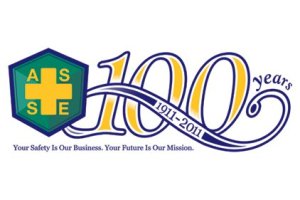 The American Society of Safety Engineers (ASSE) is expressing opposition to reported efforts to change a bill sponsored by California Assemblyman William Monning that would call for a limit on the type of professionals who would be able to supervise or direct the monitoring of control methods for permissible exposure levels (PELS) in state workplaces. Proposed changes to bill AB 553 would allow only California Industrial Hygienists (CIH) to do the work and bar employers from hiring occupational safety and health professionals to do a job many are already doing when it comes to PELs.
The American Society of Safety Engineers (ASSE) is expressing opposition to reported efforts to change a bill sponsored by California Assemblyman William Monning that would call for a limit on the type of professionals who would be able to supervise or direct the monitoring of control methods for permissible exposure levels (PELS) in state workplaces. Proposed changes to bill AB 553 would allow only California Industrial Hygienists (CIH) to do the work and bar employers from hiring occupational safety and health professionals to do a job many are already doing when it comes to PELs.
“To be clear, ASSE is not opposed to CIHs supervising or directing the monitoring of the control methods for PELs as we have many CIHs among our members,” ASSE President Terrie S. Norris, CSP, ARM, of Long Beach, CA, said. “As a matter of fact, our Industrial Hygiene Practice Specialty is one of our fastest growing specialty groups. What we oppose is any effort that would, without basis, give one certification an unfair competitive advantage. Giving all CIHs the exclusive right under California law to supervise and direct such monitoring will bar a much larger group of qualified safety and health professionals from doing work they already succeed at doing.”
The ASSE predicts that the change would be harmful to California employers, who would forced to hire only CIHs to manage occupational safety and health for their workplaces.
“Given how few CIHs there are in California, many workplaces could go without needed professional expertise and workers could go unprotected from the very risks your legislation is meant to address,” Norris said. “We reject any effort to limit this work to any one occupational safety and health designation. At the very least, if CIHs are included, CSPs (Certified Safety Professional) and CHMMs (Certified Hazardous Materials Management) must also be included.”
As reported by the Cal OSHA Reporter December 2, 2011, the CIHC intends to pursue this advantage for CIHs as part of an overall legislative effort to see the current California process for developing PELs codified. AB 553 would require the California Department of Occupational Safety and Health (DOSH) to recommend periodical updates to the state’s PELs based on quantitative risk assessments performed by other agencies.
In California, the Occupational Safety and Health Standards Board sets enforceable PELs to protect workers against the health effects of exposure to hazardous substances. PELs are a regulatory limit on the maximum amount or concentration of a chemical to which a worker may be exposed.
About ASSE
Founded in 1911, the 100-year-old Des Plaines, IL-based ASSE is the oldest professional safety society and is committed to protecting people, property and the environment. Its more than 34,000 occupational safety, health and environmental professional members lead, manage, supervise, research and consult on safety, health, transportation and environmental issues in all industries, government, labor, health care and education. www.asse.org.
